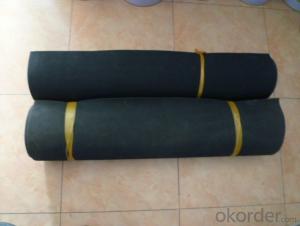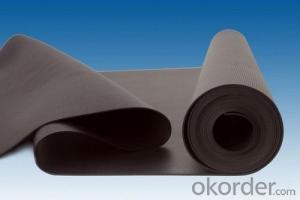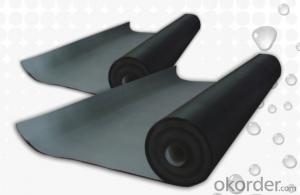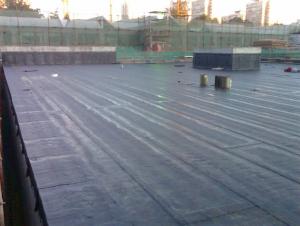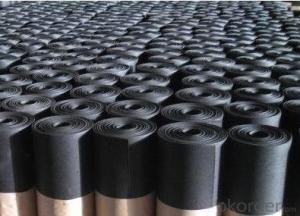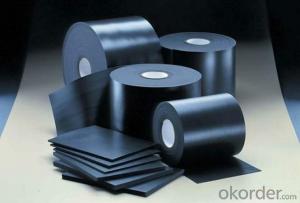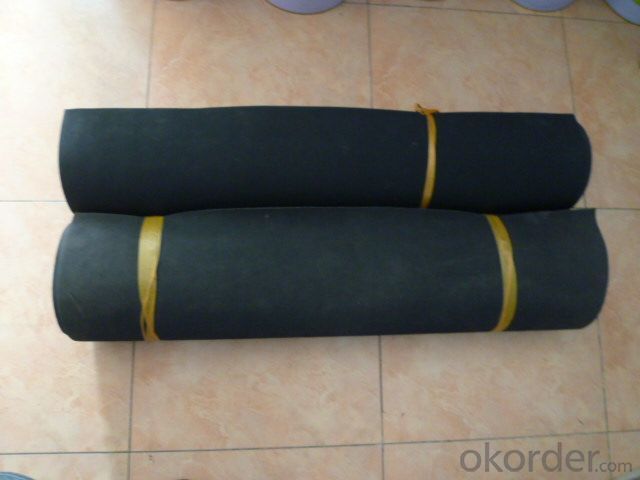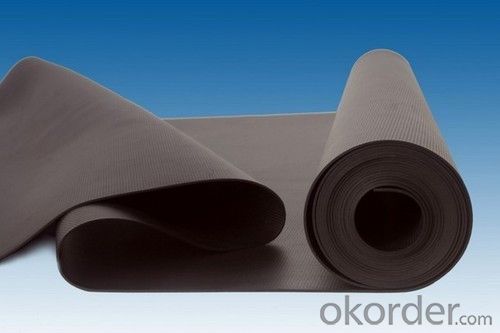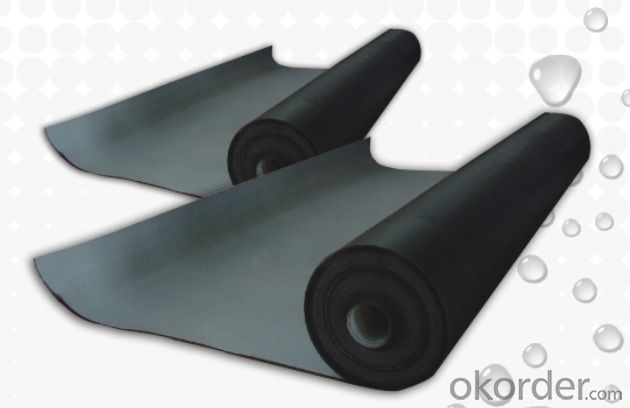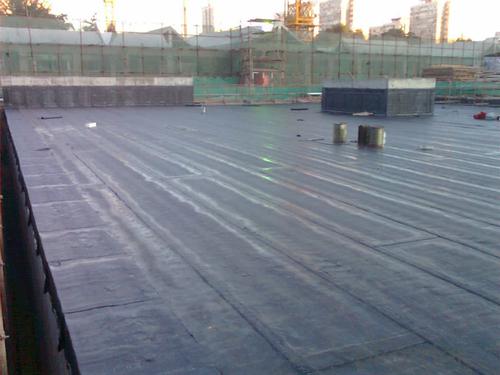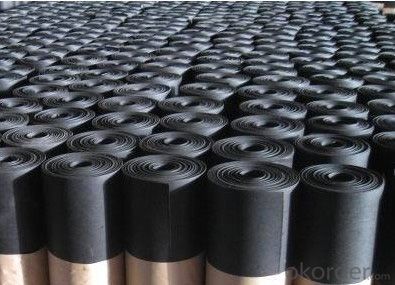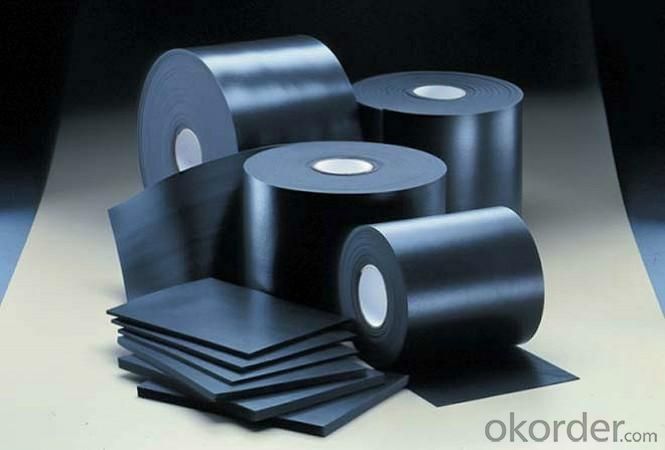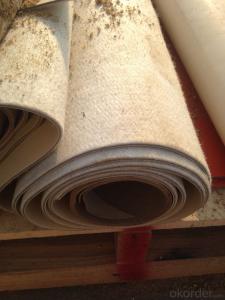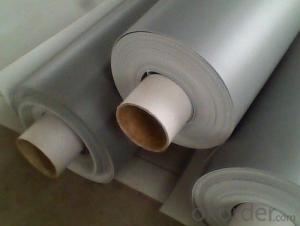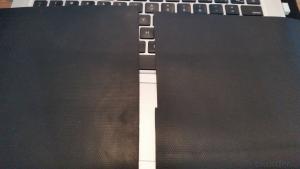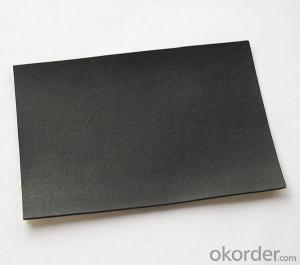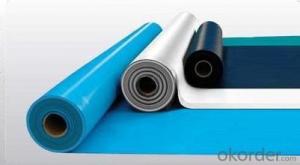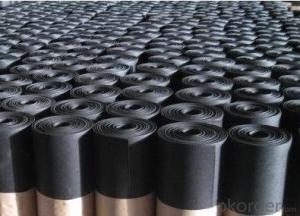EPDM Coiled Rubber Waterproof Membrane for Basement
- Loading Port:
- Shanghai
- Payment Terms:
- TT or LC
- Min Order Qty:
- 10000 m²
- Supply Capability:
- 1200000 m²/month
OKorder Service Pledge
OKorder Financial Service
You Might Also Like
EPDM Coiled Rubber Waterproof Membrane for Basement
Description Of EPDM Coiled Rubber Waterproof Membrane for Basement:
1. EPDM waterproof membrane is made from ternary ethylene-propylene rubber, which is for waterproofing of exposed and non-exposed applications.
2. EPDM waterproof membrane production adopts the world-advanced equipment of cold feeding extrusion and continuous vulcanization technology.
3. EPDM waterproof membrane is of high elasticity among high polymer waterproof materials and becomes a world-popular waterproofing material.
Main Features of EPDM Coiled Rubber Waterproof Membrane for Basement:
1. Excellent physical and mechanical performance
2. High tearing resistance
3. Good deformation adaptability
4. High puncture resistance
5. High aging resistance
6. UV resistance
Specifications of EPDM Coiled Rubber Waterproof Membrane for Basement:
| Material | EPDM Rubber |
| Size | 1.2m (width)*20m (length) or customized, weldable type 2.05m or 4m width |
| Thick | 1.2mm, 1.5mm, 2.0mm |
| Type | Vulcanized & Weldable |
| Pattern | Non-reinforced (homogeneous) |
| Certificate | ISO9001/14001 |
Applications of EPDM Coiled Rubber Waterproof Membrane for Basement:
1.Roofs, Basement, Toilets
2. Industrial and civil building waterproofing
3. Geosynthetic liner for swimming pool, channels, irrigation system
4. Especially suitable for projects with high requirements in durability, anti-corrosion and deformation.
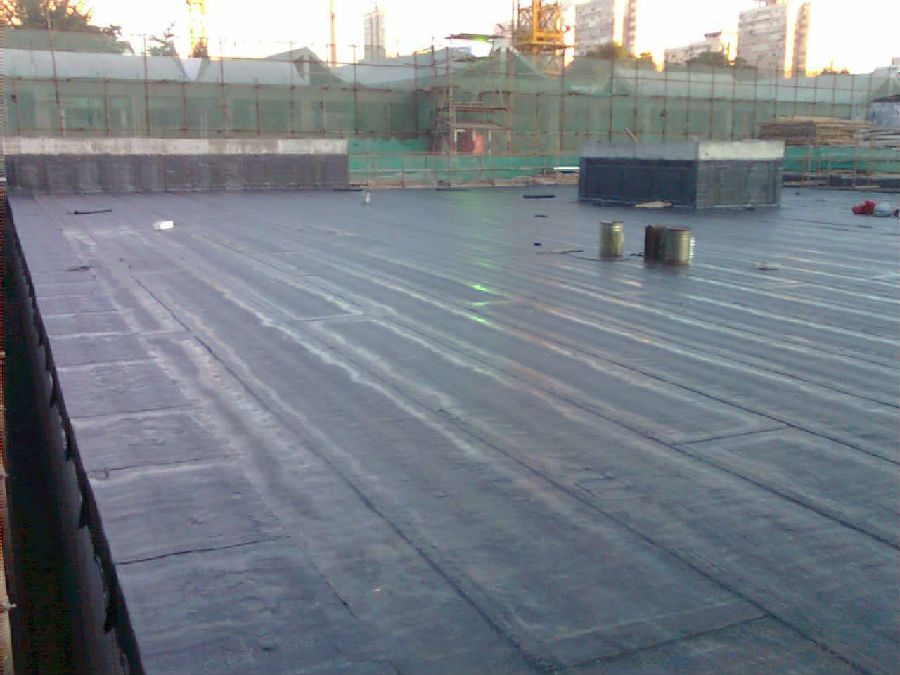
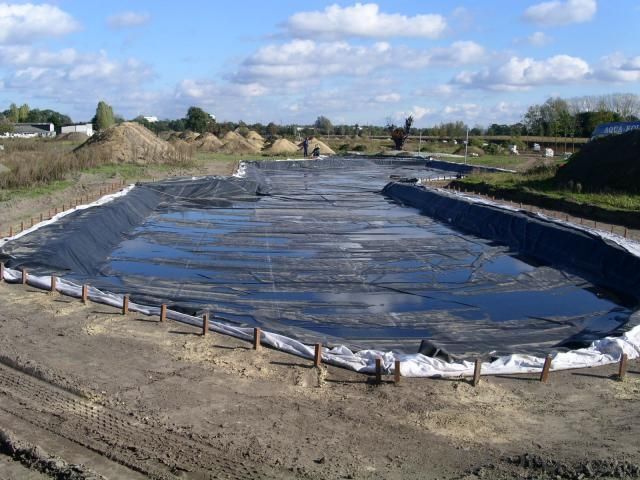

IMages of EPDM Coiled Rubber Waterproof Membrane for Basement:
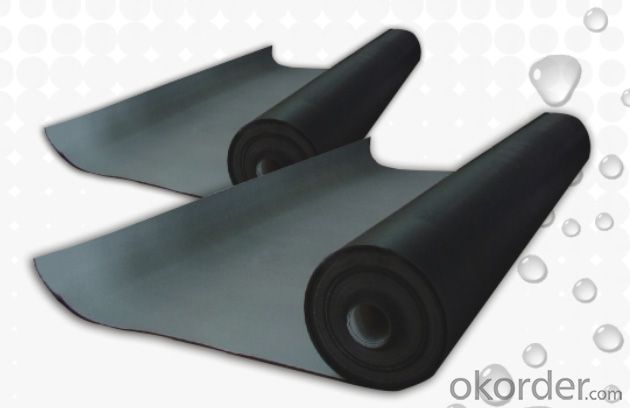



FAQ EPDM Coiled Rubber Waterproof Membrane for Basement:
1. What are we supplying?
We are specialized in producing Colorful Asphalt Roof Shingle, SBS/APP modified bitumen waterproof membrane, Self adhesive bitumen waterproof membrane, PVC waterproofing membrane, EPDM rubber roofing membrane, Single Component Polyurethane Waterproof Coating, and Spray Polyurea Waterproof Coating
.
2. How Many years experience do we have?
We have been exported to more than 20 countries in the past 15 years.
3. How long do we usually reply your request?
We always reply our customer within 24 hours.
- Q: Can a waterproofing membrane be used for a planter box?
- Yes, a waterproofing membrane can be used for a planter box to prevent water leakage and protect the surrounding structure from moisture damage.
- Q: Can a waterproofing membrane be used for power plants?
- Indeed, power plants can make use of waterproofing membranes. Waterproofing membranes find widespread use in various settings where the prevention of water penetration is essential, and power plants are no exception to this. Within power plants, there are often sections that come into contact with water, such as cooling towers, wet flue gas desulfurization systems, and other water management systems. Incorporating waterproofing membranes within these areas aids in safeguarding the structures and equipment against water damage, corrosion, and leaks. Furthermore, underground structures like basements or tunnels, which are frequently present in power plants, can also benefit from the application of waterproofing membranes. These membranes act as a reliable barrier against water infiltration, thereby ensuring the durability and longevity of the power plant structures. Consequently, the utilization of a waterproofing membrane emerges as a practical and advantageous solution for maintaining the performance and dependability of power plant facilities.
- Q: Can a waterproofing membrane be used on both residential and commercial buildings?
- Yes, a waterproofing membrane can be used on both residential and commercial buildings. Waterproofing membranes are designed to provide a protective barrier against water penetration, which is a concern for both residential and commercial structures. Whether it is a house, apartment building, office, or retail space, the waterproofing membrane can be applied to various surfaces such as roofs, walls, foundations, and basements to prevent water damage and leakage. Additionally, waterproofing membranes are available in different types and materials, allowing for customization based on the specific needs and requirements of the building, regardless of its residential or commercial nature.
- Q: Is a waterproofing membrane resistant to punctures or tears?
- Yes, a waterproofing membrane is designed to be resistant to punctures or tears. It is typically made from durable materials such as PVC, TPO, or EPDM, which are known for their strength and resistance to damage. These membranes undergo rigorous testing to ensure their ability to withstand various environmental conditions and potential sources of punctures or tears, such as sharp objects or heavy foot traffic. Additionally, some waterproofing membranes come with reinforcement layers or added protection to further enhance their puncture and tear resistance. However, it is important to note that while waterproofing membranes are highly resilient, they are not completely impervious to damage. Proper installation, regular maintenance, and avoiding unnecessary stress or impact on the membrane can help maximize its longevity and performance.
- Q: Can a waterproofing membrane be applied to metal surfaces?
- Yes, a waterproofing membrane can be applied to metal surfaces.
- Q: Are waterproofing membranes resistant to hail damage?
- Waterproof membranes serve the purpose of safeguarding against water infiltration, but they do not typically possess resistance against hail damage. Hail has the capacity to inflict substantial harm upon roofing materials, including waterproof membranes, by puncturing or ripping them. This can jeopardize the integrity of the membrane, thereby leading to leaks and water penetration. Although certain membranes may possess a degree of resilience against hail damage, it is important to acknowledge that no waterproof membrane can offer complete protection against all forms of hailstones. Hence, it is prudent to adopt appropriate preventive measures, such as incorporating additional safeguards like hail guards or considering the usage of impact-resistant membranes, in order to minimize the potential damage that may be incurred due to hail.
- Q: Does a waterproofing membrane require any special precautions during storage?
- Special precautions are necessary when storing a waterproofing membrane. To maintain its integrity and effectiveness, the membrane should be kept in a dry and cool area, shielded from direct sunlight and extreme temperatures. Moisture must be avoided, as exposure to water or high humidity levels can compromise its performance. Furthermore, the membrane should be stored upright, rather than stacked or folded, to prevent damage or deformation. It is also advisable to keep it away from sharp objects or any materials that may puncture or tear it. Adhering to these precautions will ensure the preservation of the waterproofing membrane during storage.
- Q: Can a waterproofing membrane be used for stadiums or arenas?
- Yes, a waterproofing membrane can definitely be used for stadiums or arenas. In fact, it is highly recommended to use waterproofing membranes in these large-scale structures to protect them from water damage and leaks. Stadiums and arenas are often exposed to various weather conditions, including heavy rain and snow, which can potentially cause water infiltration into the structure. A waterproofing membrane acts as a barrier, preventing water from penetrating the building envelope and causing damage to the structural components, such as concrete or steel. It helps to maintain the integrity of the structure and prolong its lifespan. Additionally, waterproofing membranes can also provide protection against other forms of moisture, such as condensation and humidity, which can lead to mold growth and deterioration of materials. Therefore, using a waterproofing membrane is a crucial step in ensuring the durability and longevity of stadiums and arenas.
- Q: Are there any specific considerations for installing a waterproofing membrane on concrete surfaces?
- Yes, there are several specific considerations for installing a waterproofing membrane on concrete surfaces. Firstly, it is important to ensure that the concrete surface is clean, dry, and free from any loose materials, oil, grease, or other contaminants. Any dirt or debris on the surface can prevent proper adhesion of the waterproofing membrane, compromising its effectiveness. Secondly, it is crucial to inspect the concrete surface for any cracks, spalling, or other damage. These defects should be repaired prior to installing the waterproofing membrane, as they can allow water to penetrate through the membrane and compromise its ability to protect the concrete. Additionally, the type of waterproofing membrane chosen should be suitable for the specific conditions and requirements of the project. There are various types of membranes available, such as sheet membranes, liquid-applied membranes, or cementitious coatings. Each type has different application methods, durability, flexibility, and resistance to various substances, so it is important to select the appropriate membrane for the specific concrete surface and its intended use. Furthermore, the installation of the waterproofing membrane should be carried out in accordance with the manufacturer's instructions. This includes applying the membrane at the recommended thickness, ensuring proper overlap and adhesion of the membrane seams, and using any recommended primers or adhesives. Lastly, it is important to consider the long-term maintenance and durability of the waterproofing membrane. Regular inspections, maintenance, and repairs should be conducted to ensure the membrane remains intact and effective in preventing water penetration.
- Q: Can a waterproofing membrane be used in commercial buildings?
- Indeed, it is possible to utilize a waterproofing membrane in commercial establishments. Waterproofing membranes serve the purpose of safeguarding diverse sections of a building, encompassing roofs, foundations, and basements, against water infiltration. In the case of commercial buildings, where the likelihood of water harm is heightened due to larger surface areas, increased foot traffic, and intricate architectural designs, waterproofing membranes prove to be a viable solution. These membranes are specially crafted to establish a protective barrier against water, thereby averting leaks, moisture, and potential structural harm. Furthermore, the integration of waterproofing membranes contributes to the longevity of the building by reducing the risk of deterioration resulting from exposure to water. Consequently, the incorporation of a waterproofing membrane system in commercial establishments aids in maintaining a secure and dry environment, safeguarding valuable assets, and optimizing the lifespan of the structure.
Send your message to us
EPDM Coiled Rubber Waterproof Membrane for Basement
- Loading Port:
- Shanghai
- Payment Terms:
- TT or LC
- Min Order Qty:
- 10000 m²
- Supply Capability:
- 1200000 m²/month
OKorder Service Pledge
OKorder Financial Service
Similar products
Hot products
Hot Searches
Related keywords
